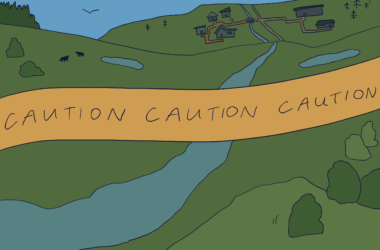Written in an extraordinarily accessible and infectiously optimistic style, The Grandest Challenge: Taking Lifesaving Science from Lab to Village argues for the advancement of biotechnology, specifically genetic engineering, in order to solve the plethora of health issues that plague the developing world. Echoing the sentiments of recent years, Dr. Peter A. Singer and Dr. Abdallah Daar argue that the incredible gap in health between rich and poor nations needn’t be so vast; science can help.
The authors touch upon the many issues surrounding such an aspiration, including scientific research, ethical and social obstacles, and the necessity of creating a sustainable infrastructure for research in developing countries.
Daar and Singer take the reader through a global tour of incredible advancements and obstacles, from the innovative creation of insecticide-infused bed nets to protect children from malarial mosquitoes in Tanzania, to the cheap, locally developed hepatitis B vaccine in India. They introduce dozens of prominent and charming personalities from all over the world. Rather than a mishmash of information and scientific ideas, the book reads like a story, highlighting Daar’s and Singer’s scientific, social, and political discoveries.
At first it seems that infectious diseases pose the greatest threats; malaria and AIDS account for millions of deaths each year. One is almost dizzied, maybe even numbed, by the unfathomable statistics presented in this book. For example, malaria kills a child every three seconds, on average.
However, the authors also reveal that non-communicable diseases pose just as great a threat to health in the developing world. Urbanization is accelerating around the world, resulting in both shorter commutes and easier access to cheap, sugary foods. Thus, in sub-Saharan Africa, both heart failure and malnutrition are pressing issues. The primary concerns surrounding global health not only touch upon scientific research, but also upon political and social behavior and education.
Those interested in philosophy will find the ethical issues particularly interesting. They discuss the critical issue of community engagement, retelling the controversy surrounding Gilead Sciences, a Californian pharmaceutical company which tested a new drug on sex workers in Bangkok infected with HIV without the consent of the community or city.
Furthermore, there is a prominent suspicion of genetically modified foods in Western Europe—a distruct that the authors aim to battle. They provide numerous positive arguments for scientific research and innovation, providing example after example of scientific success. However, they rarely address arguments of those they call, somewhat condescendingly, “the activists,” instead treating them with a blatantly dismissive attitude. For example, many oppose genetic modification because the ecological consequences are unforeseeable. Though Daar and Singer persuasively argue for genetically modified foods, more time directly addressing its critics would have been appreciated.
The book is thought provoking, expansive, and incredibly informative, whether one is interested in politics, science, ethics, or business. As the innovation gap continues to grow between the West and the rest, the topic is becoming increasingly important.








